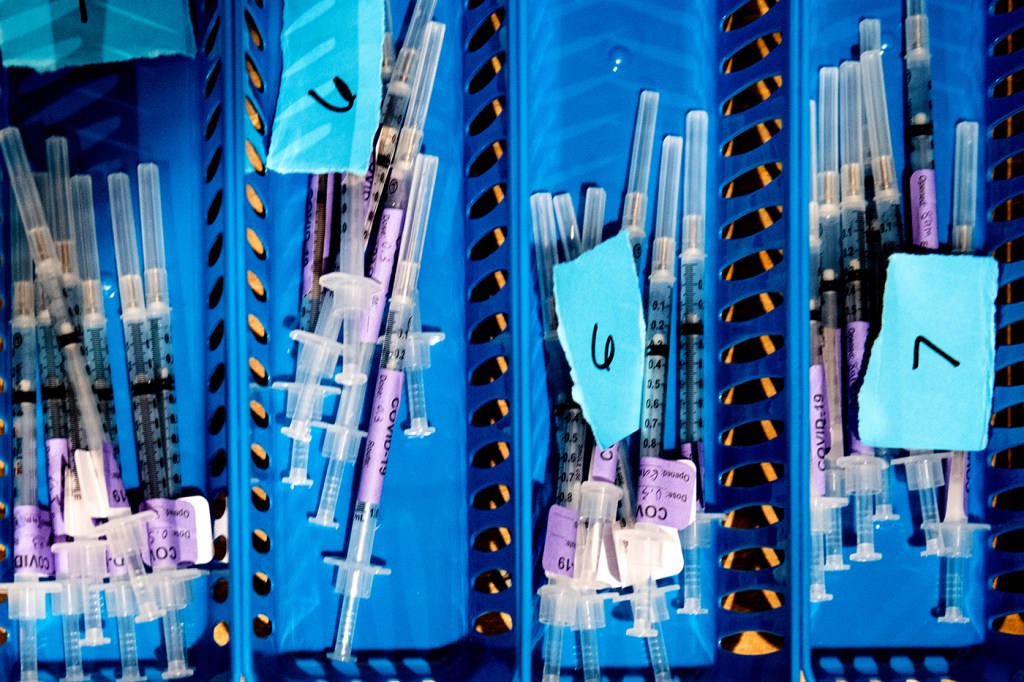More than 50% of COVID-19 deaths could have been prevented with better global vaccine distribution

Better access to vaccines could have prevented more than 50% of COVID-19 deaths in 20 lower income countries, according to a new paper in Nature Communications co-authored by Northeastern professor Alessandro Vespignani.
The estimation that “thousands and thousands” of lives were lost to vaccine inequity was a “punch in the stomach,” says Vespignani, director of Northeastern’s Network Science Institute and Sternberg Family Distinguished Professor.
“We don’t have a clear solution to the problem,” he says.
“We need to have a different system in place so that we have more vaccines and a more equitable distribution across the world,” Vespignani says. “There is a high price for this inequity.”
Vespignani and six other scientists, including Northeastern research associate professor of physics Matteo Chinazzi, used a computational epidemic model to estimate how many deaths would have been averted in the 20 countries, including Kenya, Afghanistan and Bolivia, if they had received the COVID-19 vaccines at the same time as the U.S. and other high income countries and in comparable quantities.
In a second “what if” scenario, the researchers also looked at what would have happened if the nations had received the vaccines earlier, but in no greater amount.
In the first scenario, “we estimate that more than 50% of deaths that occurred in the analyzed countries could have been averted,” the Nature Communications paper says.
“For more than half of the countries, the percentage of deaths averted exceeds 70%, with peaks above 90% for Afghanistan and Uganda,” the paper says.
In terms of numbers of deaths, it means that an estimated 149,000 COVID-19 deaths could have been prevented in Indonesia and 1,700 in Rwanda with earlier and more vaccines, according to the researchers.
In the second scenario, “even without increasing the number of doses, we estimate an important fraction of deaths (6% to 50%) could have been averted,” they say.
International health agencies and foundations anticipated the problem and tried to address it but failed to do so in time, Vespignani says.
The Nature Communications paper says, “Despite international initiatives for equitable sharing agreements such as the COVID-19 Global Vaccine Access (COVAX) program, vaccine nationalism has largely superseded global equity efforts.”
After the COVID-19 vaccines were introduced in October of 2021, high income countries ended up with one or more doses of vaccine for every person, while low income countries had one to four doses of vaccine for every 100 individuals, Vespignani says.
The other countries included in the study were Angola, Ghana, Côte d’Ivoire, Mozambique, Zambia, Egypt, Morocco, Pakistan, Sri Lanka, Bangladesh, El Salvador, Honduras, Philippines and Kyrgyzstan.
A table in the study shows that an estimated 518,000 deaths could have been averted if the 20 countries in the study had the same access to vaccines as the U.S.
Delayed vaccination campaigns also meant that some of the countries extended “non-pharmaceutical interventions” such as school, restaurant and business closures for longer periods of time than higher income countries, Vespignani says.
He says the barriers to accelerated vaccine delivery in low and lower middle income countries are many, including a shortage of frontline health workers, limited funding and lack of infrastructure for vaccine delivery.
“It would be ideal to start to roll out the vaccine administration quickly and for a large part of the population,” Vespignani says. “But in several low income countries, to reach the rural areas even if you have the vaccine is a major problem.”
“Besides being “very costly in terms of life,” vaccine inequity encourages the circulation of pathogens in countries where a large percentage of people are not inoculated, he says.
The solution isn’t just to redistribute the vaccine supply from wealthy countries to poorer ones because “you will have more deaths in the higher income countries,” Vespignani says.
“The issue is how to step up the system in order to have much more vaccine doses the next time” a pandemic breaks out, he says.
“Timing is important as well as the number of doses. We need to have both logistic and manufacturing capacity in place the next time so that we can really have a different outcome in those countries.”.
Cynthia McCormick Hibbert is a Northeastern Global News reporter. Email her at c.hibbert@northeastern.edu or contact her on Twitter @HibbertCynthia.






